FORT STEWART, Ga. "When you're about 10 feet from the ground, extend your arms out at your sides," yelled a crew chief. "As you get closer to the ground, bring your hands to the top of your head, so when you touch the ground, your hands are on your head."
A Soldier, dangling from the outside of the Black Hawk, nodded to signal she understood. The crew chief pushed a red button, and the Soldier began to descend to the ground.
"We're practicing hoist operations that we'll be doing when we deploy," said Sgt. Matthew Gomes, Company C, 2nd Battalion, 3rd Aviation Regiment. "It's what we do when we are unable to land the aircraft. (That way,) we are still able to get a medic down to the patient and bring the patient up to the aircraft."
Company C, a medical evacuation company with 2/3 Avn., conducted the Higher Performance Rescue Hoist or HPU training at Hunter Army Airfield, March 19.
The HPU is the device the MEDEVAC team uses when lowering or lifting individuals. Able to hold 600 pounds, the HPU is an important piece of equipment to have in difficult situations both abroad and at home.
"Here in Georgia, there is always a possibility, with all the water, that we won't be able to land the aircraft," said Gomes. "We would use this asset to pick up people, but we have to practice our technique and control so we don't injure anyone. We're fine tuning our abilities to stay proficient, like (most Soldiers) do with (their) weapon."
Before using the HPU a 250-pound block is lowered the full length of the 250-foot cable to ensure the cable is coiled tight when the weight is brought back up to the Black Hawk.
Proper operation of the HPU entails four phases. The first consists of a call to signal when the medic should get hooked up to the HPU. During the second phase, the aircraft makes a pattern around the potential landing site for reconnaissance and to asses the situation. Phase three is the recovery phase in which a medic is lowered, the patient is brought up and then the medic is brought up. The aircraft leaves the pick-up site in the final phase.
"We're simulating the phases, but its good training just in case there is a need or a call for it," said Chief Warrant Officer Victor Stephens, a pilot in C Co. "There may be some situations where all we have is just a hole in the roof of a building, and we need to be as speedy as possible, but as safe as possible."
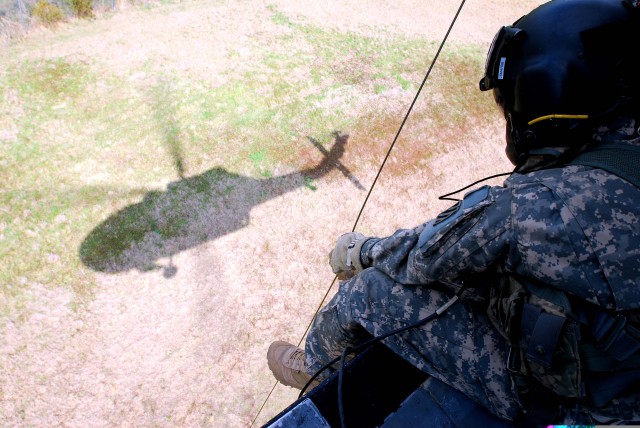
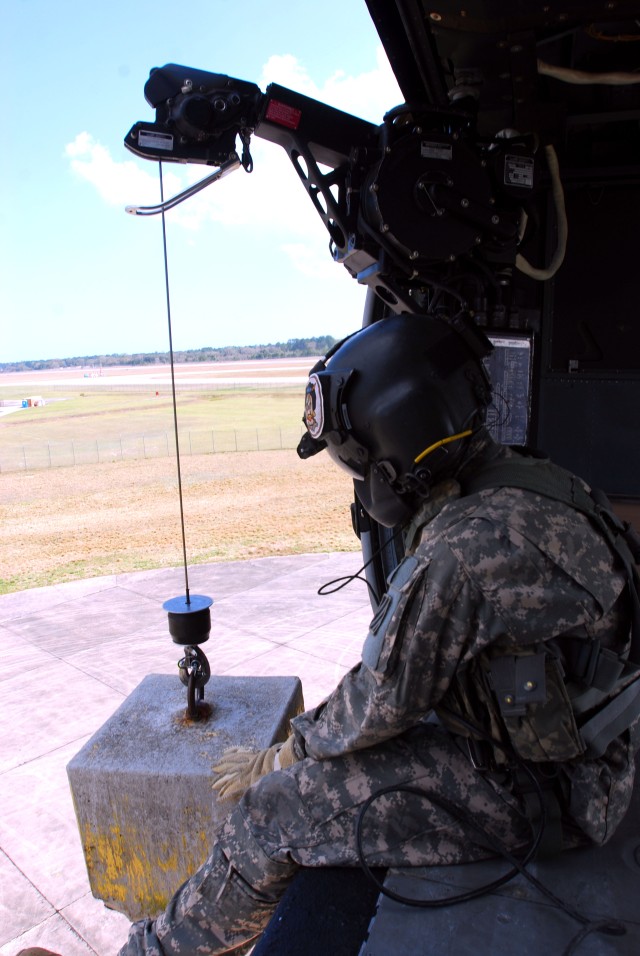
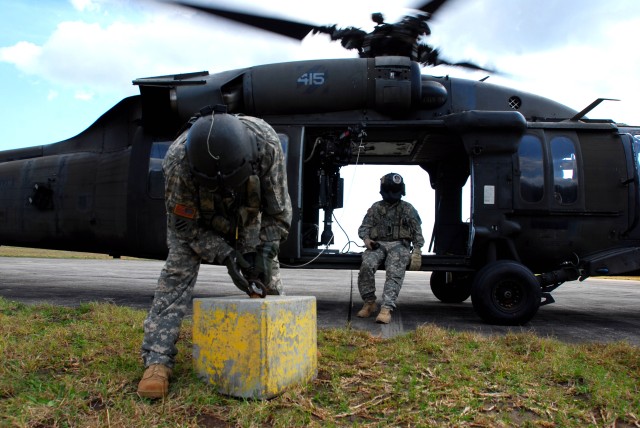
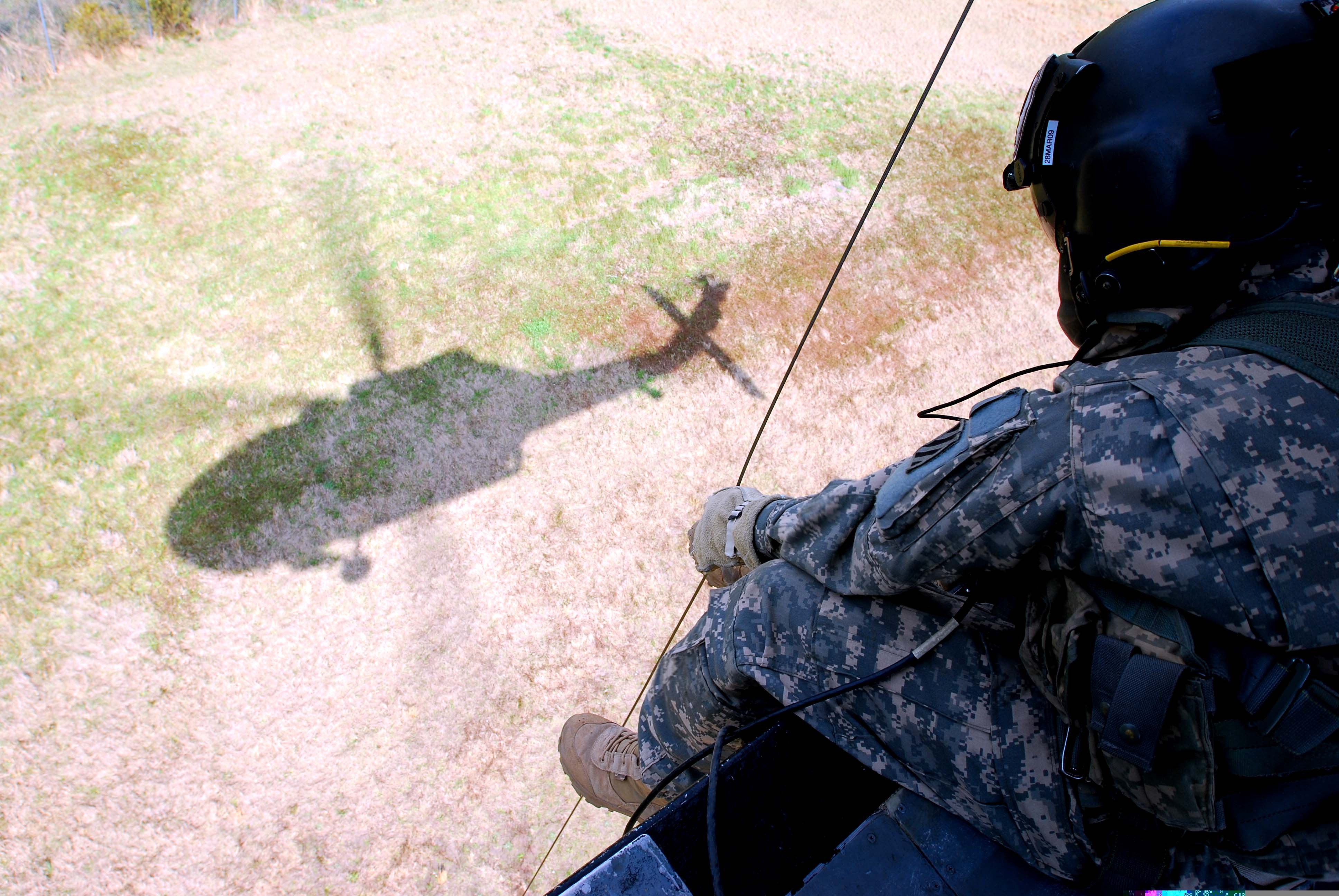
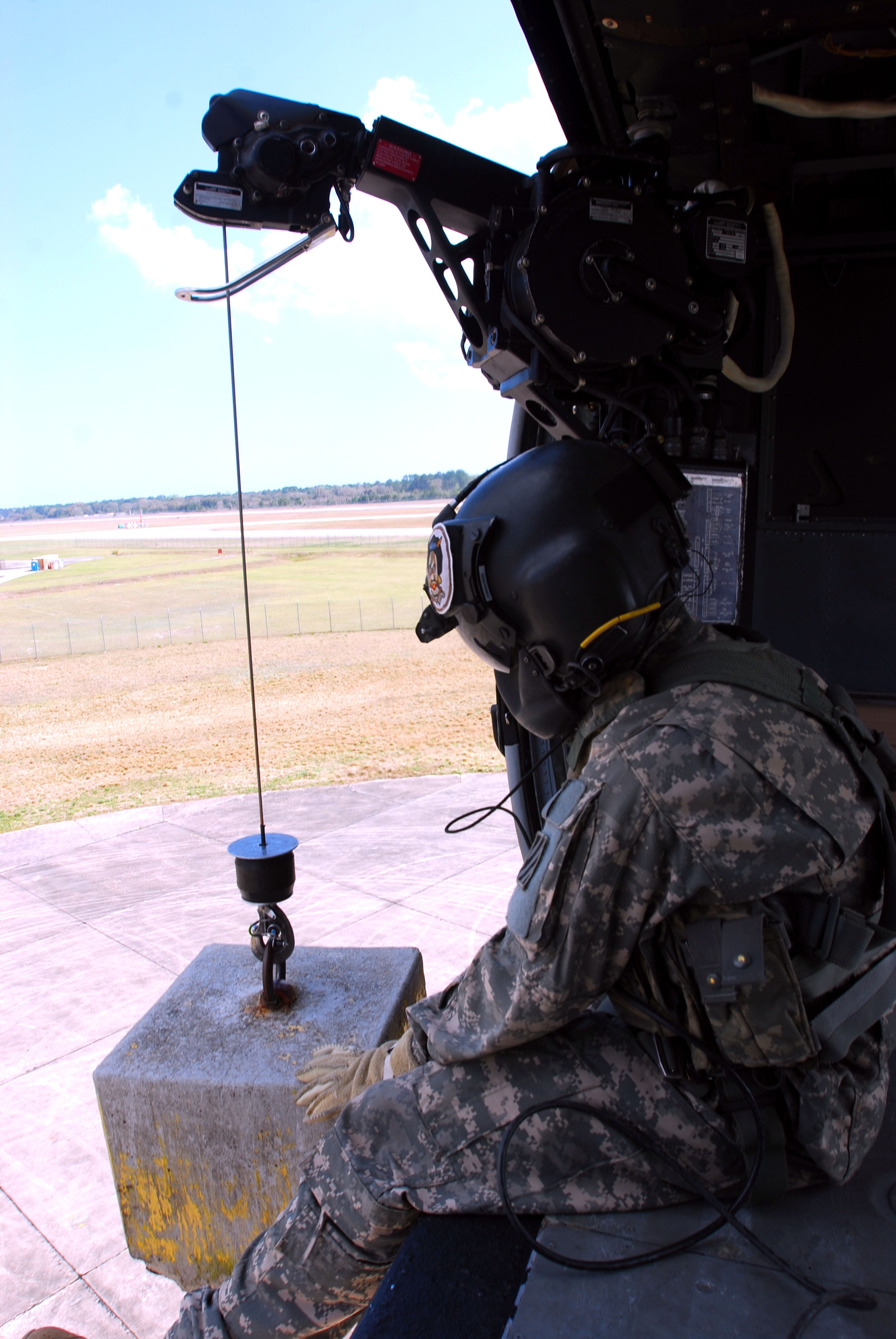
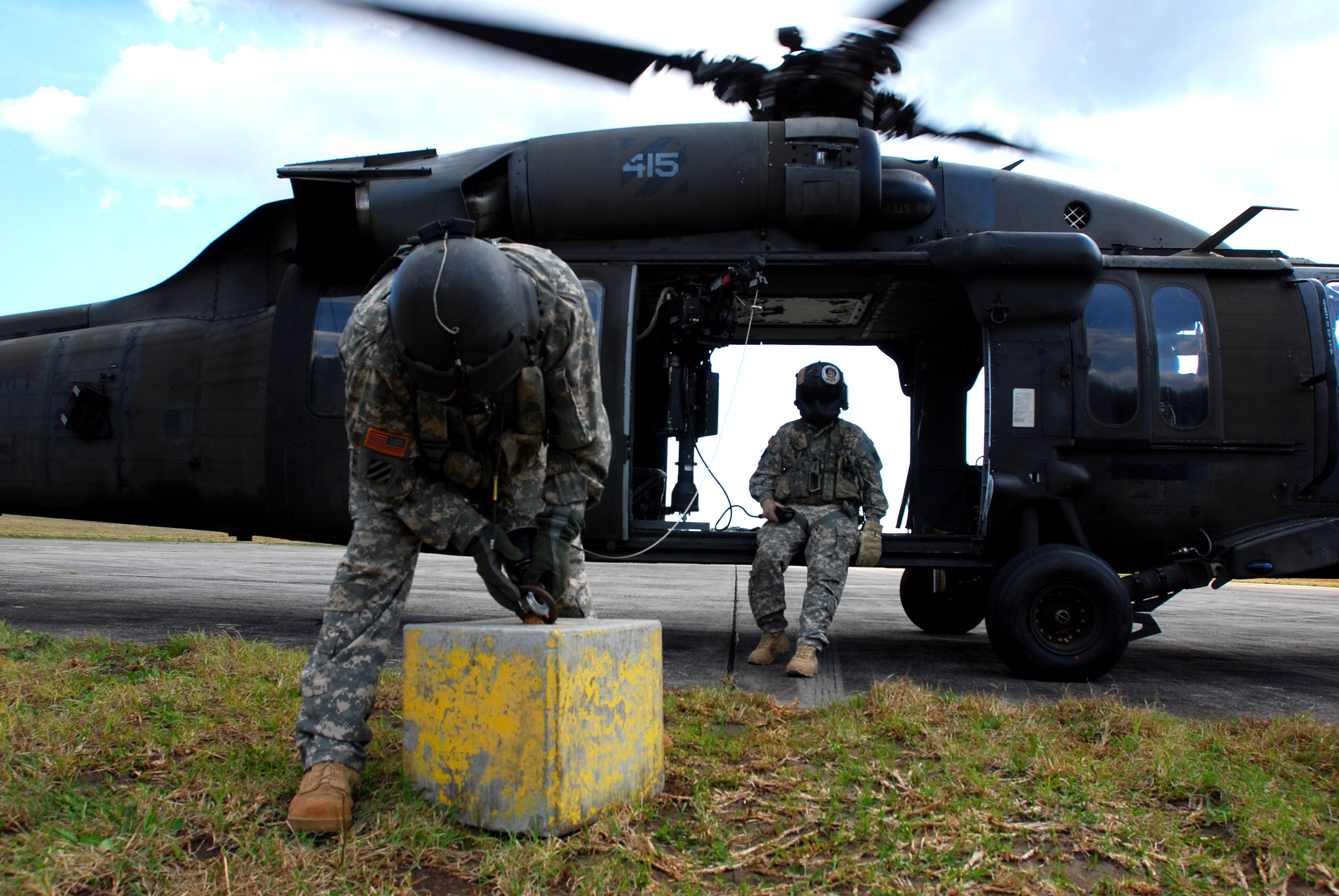
Social Sharing